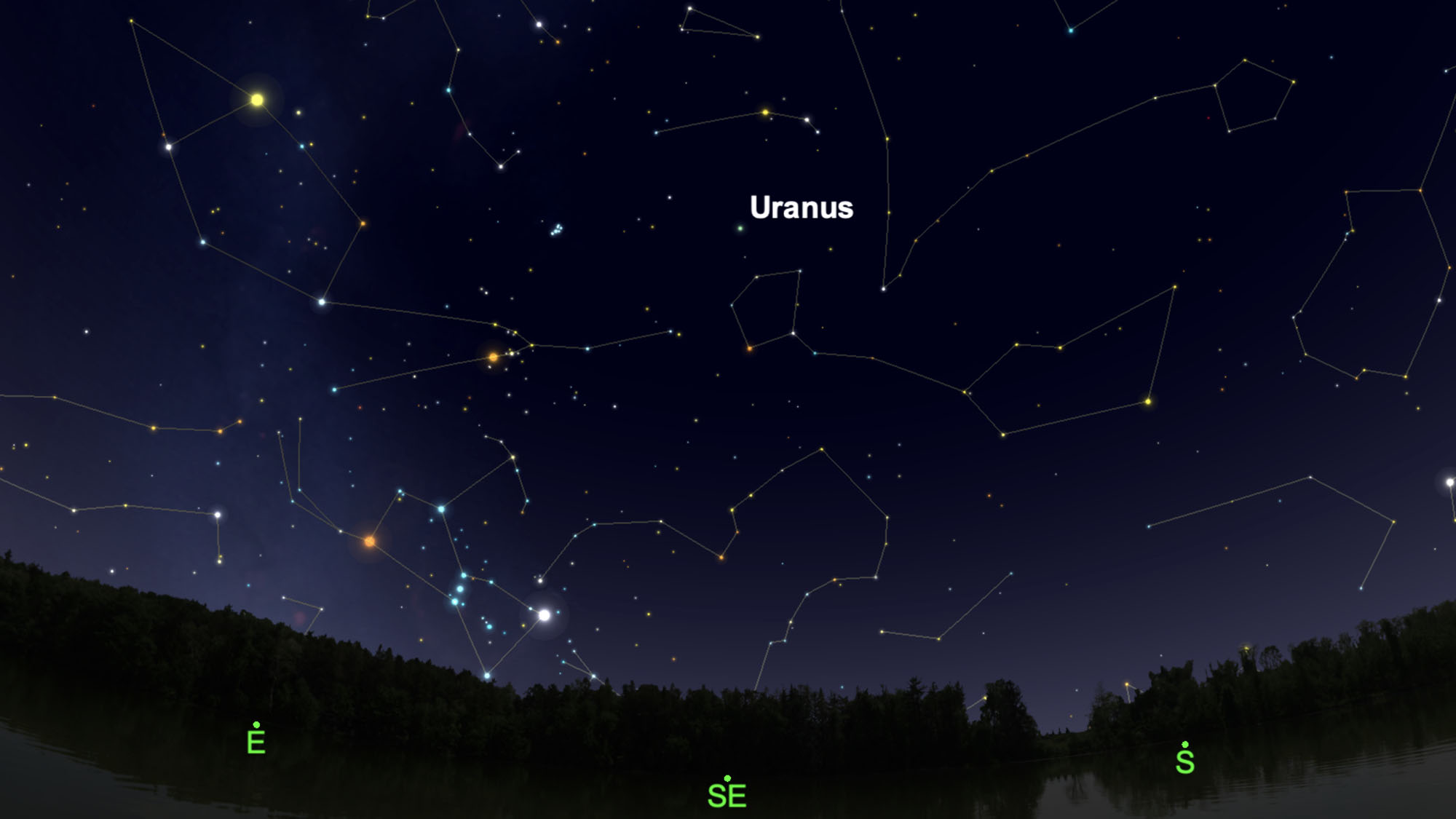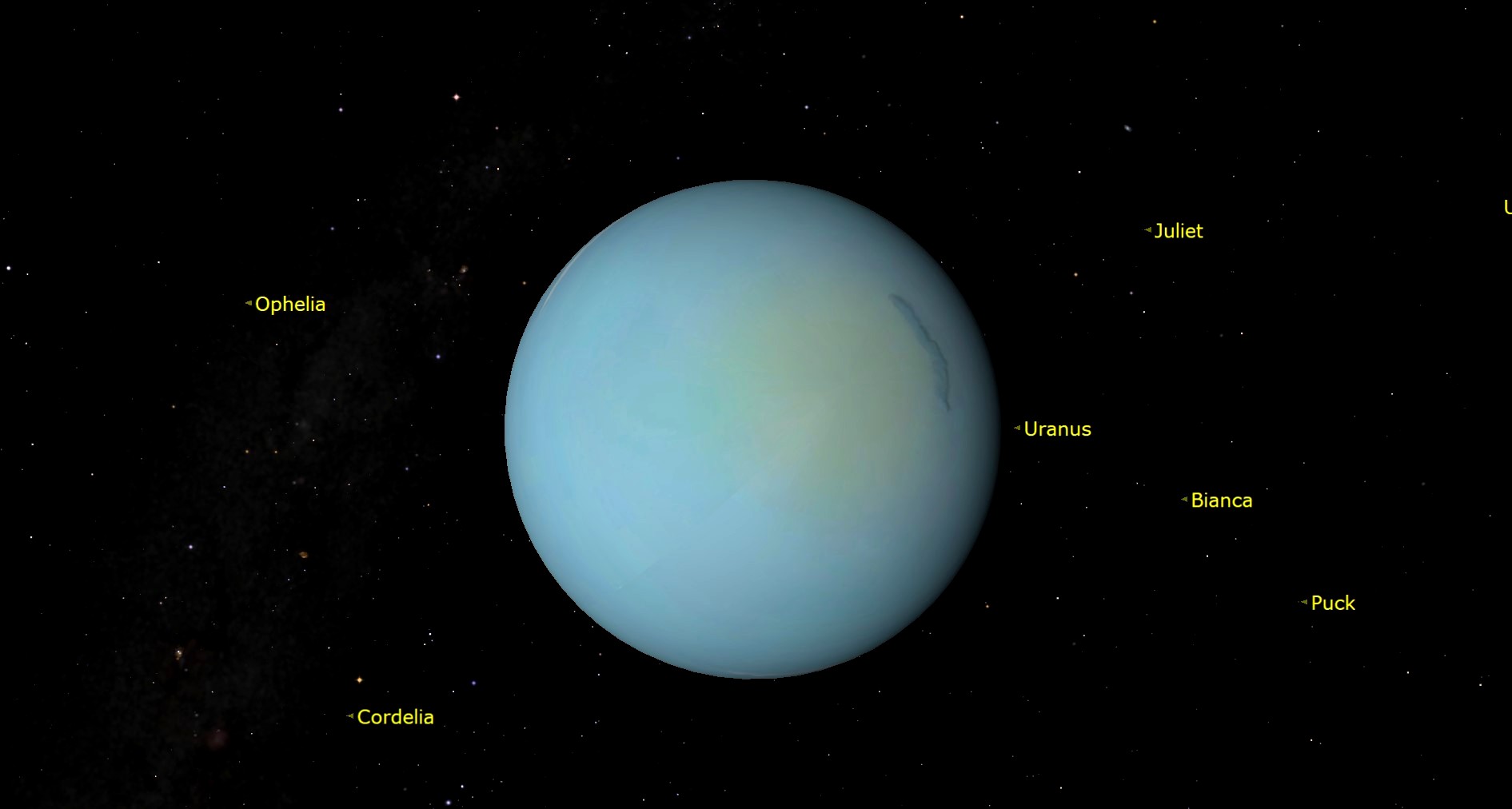Here's how to see Uranus at its brightest in the sky
The distant planet is about to reach opposition, and with the right equipment you'll be able to spot it.

The distant blue planet Uranus will reach its closest point to Earth Thursday (Nov. 4). While it's a tough world to spot with your naked eye, with binoculars or a telescope you'll have a chance to see this fascinating world at its best.
Uranus will reach a point in its orbit known as "opposition," meaning that it will be opposite the sun from the vantage point of Earth. If you're clouded out or otherwise busy on Thursday, Uranus will remain bright for weeks given its slow orbit; on average it is about 20 Earth-sun distances or astronomical units from the sun.
"Although Uranus is not considered a visible planet, at opposition it is bright enough to be visible for someone with excellent eyesight under very dark skies and ideal conditions," NASA said in a statement. "If you know where to look, it should be visible with binoculars or a backyard telescope."
Related: Top 5 weird facts about mysterious Uranus
Uranus is a ringed planet that is lying on its side, perhaps due to an ancient collision. It was the first planet discovered by a known person, given that it is only easily visible using astronomical equipment. Known weird features on the planet include delayed summer storms and diamond rain.
To spot Uranus, you don't have to rush outside because the planet will remain visible all night long, according to EarthSky.org.
The planet is just visible near the "head of the whale" in the constellation Cetus (the whale). You will need to get a star chart ready and use the star Menkar, jump to Mu Ceti, and then move over to Uranus, EarthSky said. The website also urged that you use binoculars or a telescope to spot the planet, shining at magnitude 5.6 (the edge of naked-eye visibility.)
Get the Space.com Newsletter
Breaking space news, the latest updates on rocket launches, skywatching events and more!

"While Uranus is tough to spot with your eyes alone, it's easy to view with binoculars," EarthSky added, but said "easy" is relative to you knowing exactly where to look. "You probably need a telescope to pick out its disk shape; remember, only stars are pinpoints," the website continued. "But binoculars should enhance its color; it shines with greenish-blue hue."
While the timing of its rise and set will depend on its location, from the regions around New York City, the planet will rise at 7:46 p.m. local time Thursday and set at 5:43 a.m. Friday (Nov. 5), allowing you about 10 hours of visibility, according to In-The-Sky.org.
If you're looking for a telescope to see planets like Uranus or other night sky objects, check out best telescopes guide to see what to know. If you need imaging equipment, consider our best cameras for astrophotography and best lenses for astrophotography to make sure you're ready for the next planet event.
Follow Elizabeth Howell on Twitter @howellspace. Follow us on Twitter @Spacedotcom and on Facebook.
Join our Space Forums to keep talking space on the latest missions, night sky and more! And if you have a news tip, correction or comment, let us know at: community@space.com.

Elizabeth Howell (she/her), Ph.D., was a staff writer in the spaceflight channel between 2022 and 2024 specializing in Canadian space news. She was contributing writer for Space.com for 10 years from 2012 to 2024. Elizabeth's reporting includes multiple exclusives with the White House, leading world coverage about a lost-and-found space tomato on the International Space Station, witnessing five human spaceflight launches on two continents, flying parabolic, working inside a spacesuit, and participating in a simulated Mars mission. Her latest book, "Why Am I Taller?" (ECW Press, 2022) is co-written with astronaut Dave Williams.









